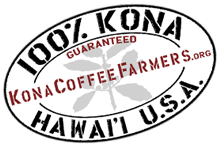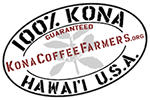“KONA” name
Only coffee grown in the North and South districts of Kona may use the geographic designation of Kona. The KCFA feels that the use of the word “Kona” in a 10% Kona Blend (90% of which is non-Kona) is abusive. There are no Federal regulations protecting Kona Coffee. Anyone outside of Hawaii can use the…


